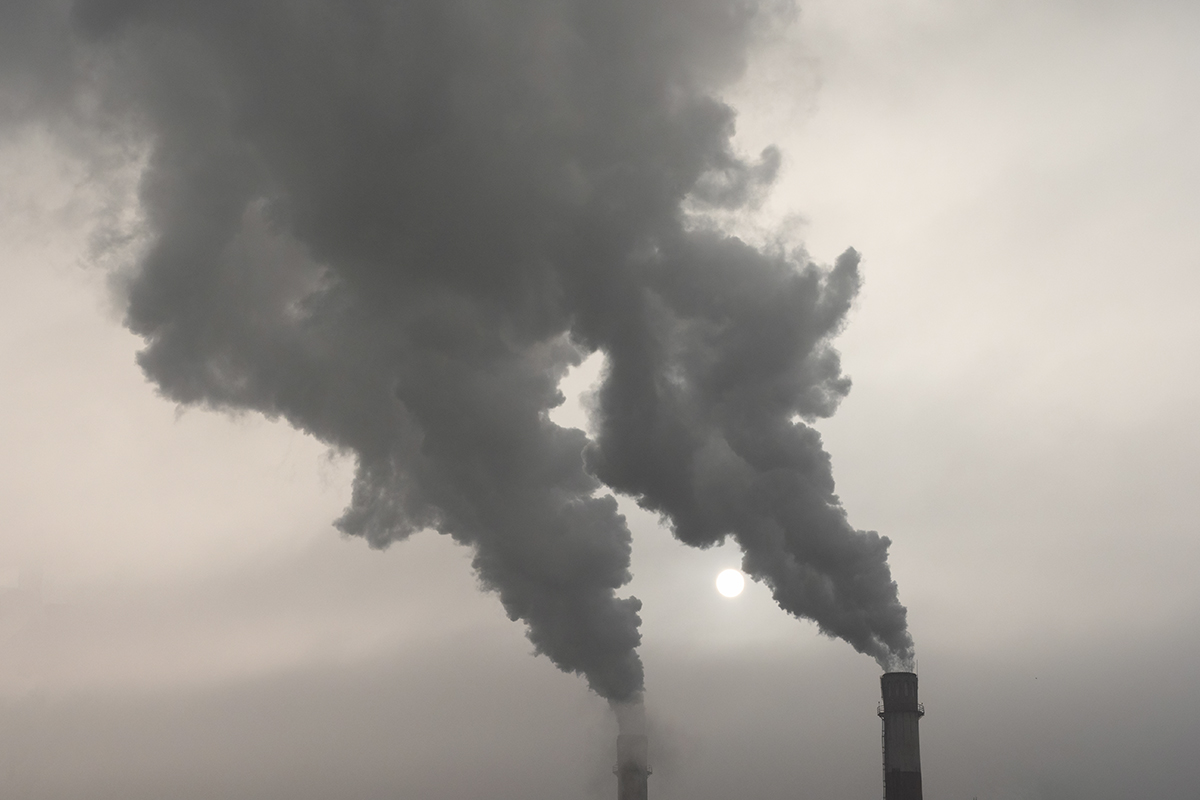Smog and its sources
Smog is an atmospheric phenomenon resulting from the mixing of air polluted with harmful substances with the natural components of the atmosphere. There are two main types of smog: photochemical (summer) and classic (winter). Photochemical smog is mainly formed in summer as a result of chemical reactions between nitrogen oxides and volatile organic compounds under the influence of solar radiation. Classical smog, sometimes referred to as London smog, occurs in winter and results from the burning of fossil fuels, mainly coal and wood.
The biggest sources of air pollution are industrial activities, car transport, the burning of fossil fuels in domestic heating cookers and agriculture. Factories and power plants, especially those fired by coal, emit huge amounts of pollution. Traffic, especially in cities, contributes to high concentrations of nitrogen oxides and particulates. During the heating season, the burning of low-quality fuels in domestic cookers significantly worsens air quality.
Components of smog and their impact on lung health
Smog consists of many harmful substances that negatively affect lung health. The most dangerous components of smog are particulate matter (PM10 and PM2.5), nitrogen oxides, sulphur dioxide, ground-level ozone and volatile organic compounds. Particulate matter can penetrate deep into the lungs, causing inflammation and tissue damage. Long-term exposure to particulate matter is associated with the development of chronic respiratory diseases, including asthma, chronic obstructive pulmonary disease (COPD) and increased risk of pulmonary infections.
Nitrogen oxides and sulphur dioxide irritate the airways, increasing the risk of bronchitis and pneumonia. Ground-level ozone, i.e. that formed by photochemical reactions in the lowest layer of the atmosphere, can cause alveolar damage and reduce lung function. Volatile organic compounds are associated with the formation of photochemical smog and have carcinogenic effects. All of these smog components interact to worsen air quality and human health, particularly for the more vulnerable, such as children, the elderly and people with existing respiratory diseases.
Mechanisms of damage to the respiratory tract by air pollutants
There are ilk main mechanisms by which air pollutants damage the airways. Firstly, particulate matter (PM10 and PM2.5) is small enough to penetrate deep into the lungs and reach the alveoli. There they cause inflammation, damage lung tissue and interfere with gas exchange. Long-term exposure to particulate matter leads to chronic respiratory diseases such as the aforementioned asthma or COPD.
Nitrogen oxides and sulphur dioxide are gases that irritate the mucous membranes of the airways, leading to inflammation and swelling. They can cause bronchospasm, which makes breathing difficult, especially in people with asthma. Long-term exposure to nitrogen oxides and sulphur dioxide increases the risk of respiratory infections and aggravates existing lung diseases.
Ground-level ozone, formed by chemical reactions between nitrogen oxides and volatile organic compounds when exposed to sunlight, is a powerful oxidant that can damage lung epithelial cells. This causes inflammation and reduces the lungs' ability to regenerate. Ground-level ozone also increases the permeability of the lung epithelium, allowing other pollutants and pathogens to reach deeper parts of the respiratory system more easily.
Groups most vulnerable to the negative effects of smog
Air pollution affects different groups of people in different ways, but certain groups are particularly vulnerable to the negative effects of smog. The most vulnerable include children, the elderly, people with respiratory diseases and people with weakened immune systems.
- Children are one of the most vulnerable groups because their respiratory and immune systems are not yet fully developed. Children breathe faster than adults, which means that they inhale more pollutants per unit of body weight. Exposure to smog in childhood can lead to serious health problems such as asthma, bronchitis and delayed lung development.
- Older people are also particularly vulnerable to the negative effects of air pollution. As they age, the respiratory and immune systems become less effective, making them more susceptible to infections and chronic diseases. For the elderly, smog can lead to an exacerbation of existing lung diseases and also cause cardiovascular disease. Studies show that pneumonia is one of the leading causes of hospitalisation and death in this age group.
- People with respiratory diseases are particularly vulnerable to the effects of smog. Air pollution can exacerbate the symptoms of these diseases, leading to more frequent asthma attacks, breathing difficulties and an increased risk of infection. For these individuals, smog poses a serious risk that may require frequent medical interventions.
- People with weakened immune systems, including those with autoimmune diseases, people who have undergone organ transplants, and those with HIV, are also at increased risk. Air pollution can weaken the immune system even further, increasing the risk of health complications.
Air pollution and the risk of pneumonia and other respiratory diseases
All the air pollutants discussed earlier have a direct impact on respiratory health. They can cause acute and chronic damage to the respiratory tract, increasing the risk of pneumonia and other diseases.
Particulate matter penetrates deep into the lungs, causing inflammation, swelling and increased mucus production. This favours bacterial infections such as pneumonia, which is one of the leading causes of hospitalisation in adults in Poland, especially in the elderly and those with chronic diseases.
In addition to pneumonia, air pollution can lead to asthma and COPD. Nitrogen oxides and sulphur dioxide irritate the mucous membranes of the airways, leading to chronic bronchitis. Ground-level ozone damages lung epithelial cells, worsening symptoms of chronic diseases.
Long-term exposure to air pollution also increases the risk of lung cancer. Carcinogens such as polycyclic aromatic hydrocarbons (PAHs) can lead to DNA mutation and the development of cancer cells. Reducing pollutant emissions and improving air quality are priorities in an effort to reduce the risk of these serious diseases.

